Maṇi Wheels
Maṇi wheels are found throughout the Himalayan region in a great variety of sizes and designs. Traditionally, wind and water power some larger maṇi wheels while others are affixed to shrines and turned by hand. Additionally, many Tibetans, both lay and monastic, spin hand-held maṇi wheels (lhag ‘khor) as they go about their daily tasks. Now, in modern times, we find solar powered, electric, and digital versions gaining in popularity. When we spin maṇi wheels in a clockwise direction, rolls of paper (or film) printed with mantras spin. In this way, we are turning the wheel of the Dharma for the benefit of sentient beings and accumulating merit.
The exact history of the wheels themselves has not yet been uncovered, although Tibetan texts indicate they have been popular for centuries. Some scholars speculate that the Chinese first developed spinning library cabinets to literally, “turn the wheel of the Dharma.” Although English translations often name them “prayer wheels,” this is not technically correct. The wheels contain mantras rather than prayers. As Khenpo Gyaltsen notes below, many maṇi wheels bear the syllables Oṃ maṇi padme hūṃ[ on the outside.
Here, we reprint an excerpt from Khenpo Gyaltsen’s A Lamp Illuminating the Path to Liberation: An Explanation of Essential Topics for Dharma Students. Khenpo-la explains the symbolic meaning of maṇi wheels. In addition, he quotes the buddhas and bodhisattvas, explaining the benefits of continually spreading the Dharma in this way.
The Significance of Maṇi Wheels
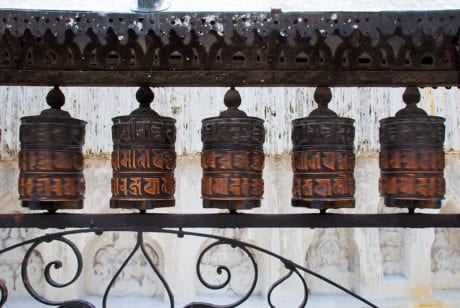
The Sūtra of the Great Winding River explains:
The base is of wood from the bodhi tree,
For bodhicitta to be naturally engenderedThe ‘life tree’ (central axle) is made from hard iron,
For the yogi’s lifespan to endure and be stable.
maṇi hūṃ is inscribed on the base.
Oṃ spins outwards, turned by the spindle.
Merit, enjoyments, and riches thereby grow.
The ornament spinning on top
Symbolizes Amitabha, the dharmakāya.
It is the mark of attainment of the level of dharmakāya.
The wheel turning in the middle
Symbolizes great compassion, the saṃbhogakāya.
It is the sign of the unity of the two truths.
Its revolving fringe is the sign of the nirmāṇakāya;
That accomplishes the benefit of beings.
The hanging conch that revolves around like a stone
Is the sign of the spreading of enlightened activities to tame beings.
The great parasol spinning in the center
Will bring about the perfection of abandonment, realization, and emptiness,
After the completion of all paths and bhumis.
One should know this to be so.The Benefits of Maṇi Wheels
The King of the Śākyas (Buddha Śākyamuni) taught:
Nirvirana-vishkambin, listen carefully:
Spinning the revolving stone hanging on the mani wheel once is superior
To practicing the supreme purification
Of the essential truth for one year.
Turning the dharma wheel once is superior
To practicing the middling meditation
On essential truth for seven years.
Turning the dharma wheel once is superior
To practicing the inferior meditation
On the essential truth for nine years.
Turning the dharma wheel once is superior
To eons of listening, contemplating, and meditating.The Buddha, purifier of all obscurations, taught: Turning the dharma wheel once is superior
To exerting oneself in the practice
Of the ten perfections for one thousand eons.
Turning the dharma wheel once is superior
Even to teaching and studying the three baskets of sutras
And the four classes of tantra until the end of the eon.The protector Maitreya taught:
If one offers fine drapes
To the profound wheel of dharma,
One will, for five hundred lifetimes, be well-dressed oneself.
Through the merit of offering a hook for the wheel,
One will traverse all paths to liberation.
Through the merit of offering a revolving stone,
One will become a protector of beings.
By means of reciting secret mantras by the million,
One will be worshiped by deities of wealth
And gain control over humans, wealth, and food.
All encounters will become meaningful.
Sentient beings afflicted by obscurations
Will be liberated from the lower realms.
As for the temporary benefits of turning the mani wheel,
One will withstand infectious diseases and contagion,
Destroy harmful demons and hostile obscurations,
And overcome the impure defilements of strife.
One will defeat whole armies of demons and obstructors.As Mañjuśrī taught:
The four great kings and the protectors of the ten directions
Will safeguard us all from every obstacle
In the main and intermediate directions.
They will purify us from the karma of the lower realms,
From the five deeds of immediate result,
And from the ten non-virtues.
We will go from buddha realm to buddha realm
And be miraculously reborn in the pure land of Sukhāvatī
Upon a lion throne at the heart of a lotus.
Thereby, the awakened activity of all of the buddhas of the ten directions
Will spread throughout the ten directions.As Vajrapāṇi taught:
This mani wheel can block all those who harm:
The negative spirits from the upper regions, The evil spirits of the lower regions, the nagas,
The assembly of tsen spirits and elemental spirits
That inhabit the middle regions.
Why does the mani wheel have this ability?
Because this is the wheel of the dhāraṇī mantra
That embodies the individual essences of the five buddha families, Mighty King, the buddha of the upper direction
and all the others.As the noble Avalokiteśvara taught:
This great wheel of dhāraṇī mantras
Is distinctively superior to all other wheels.
These fortunate beings who, while maintaining their focus,
Resting their minds on the dharma wheel,
Turn it and make supplications, These are the supreme protectors of the future.
This commentary is found in:
A Lamp Illuminating the Path to Liberation: An Explanation of Essential Topics for Dharma Students by Khenpo Gyaltsen (translated by Lhasey Lotsawa Translations, Nepal: 2014, pp. 133-138.
Maṇi Wheel
The tabletop maṇi wheel featured in the photo may be ordered from our sister organization Akara collection.
For a scholarly article on origins including a translation of two nineteenth century Tibetan texts, see Dan Martin’s study of origins.


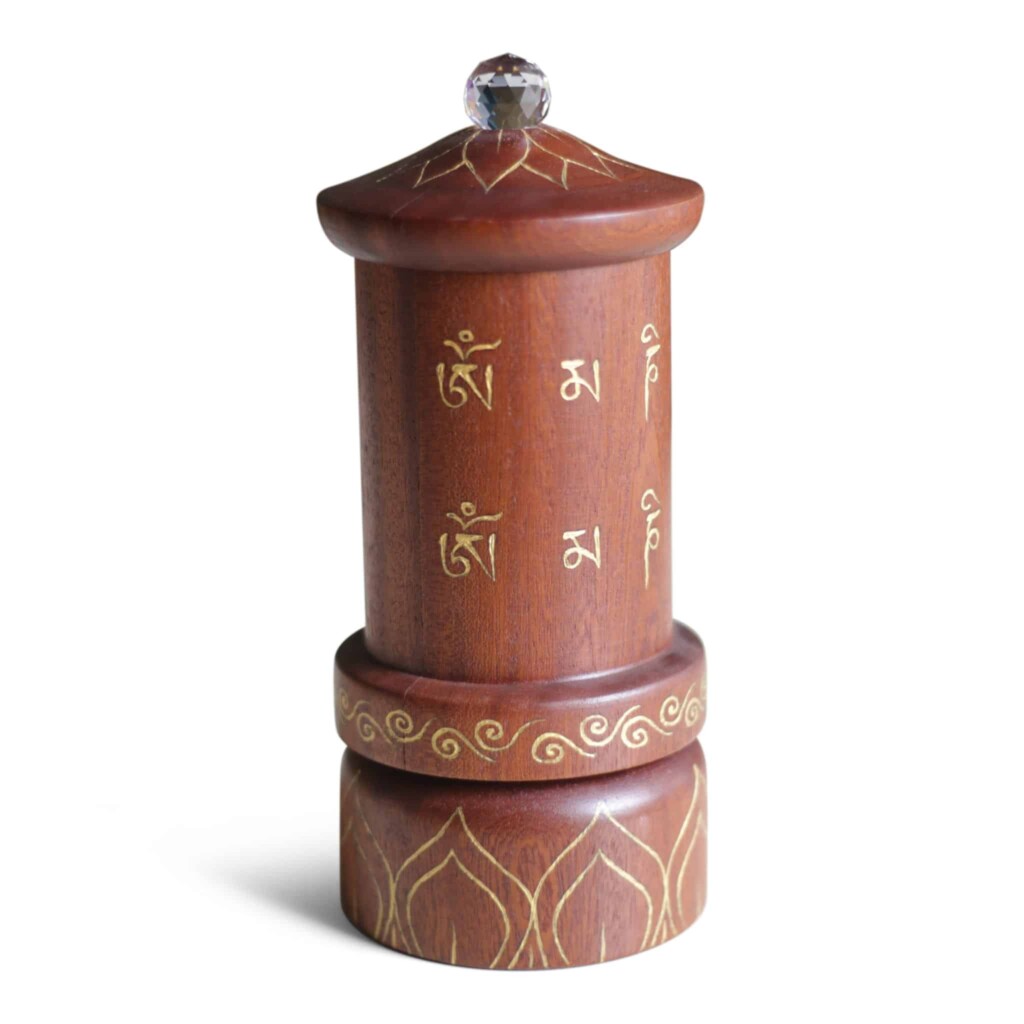
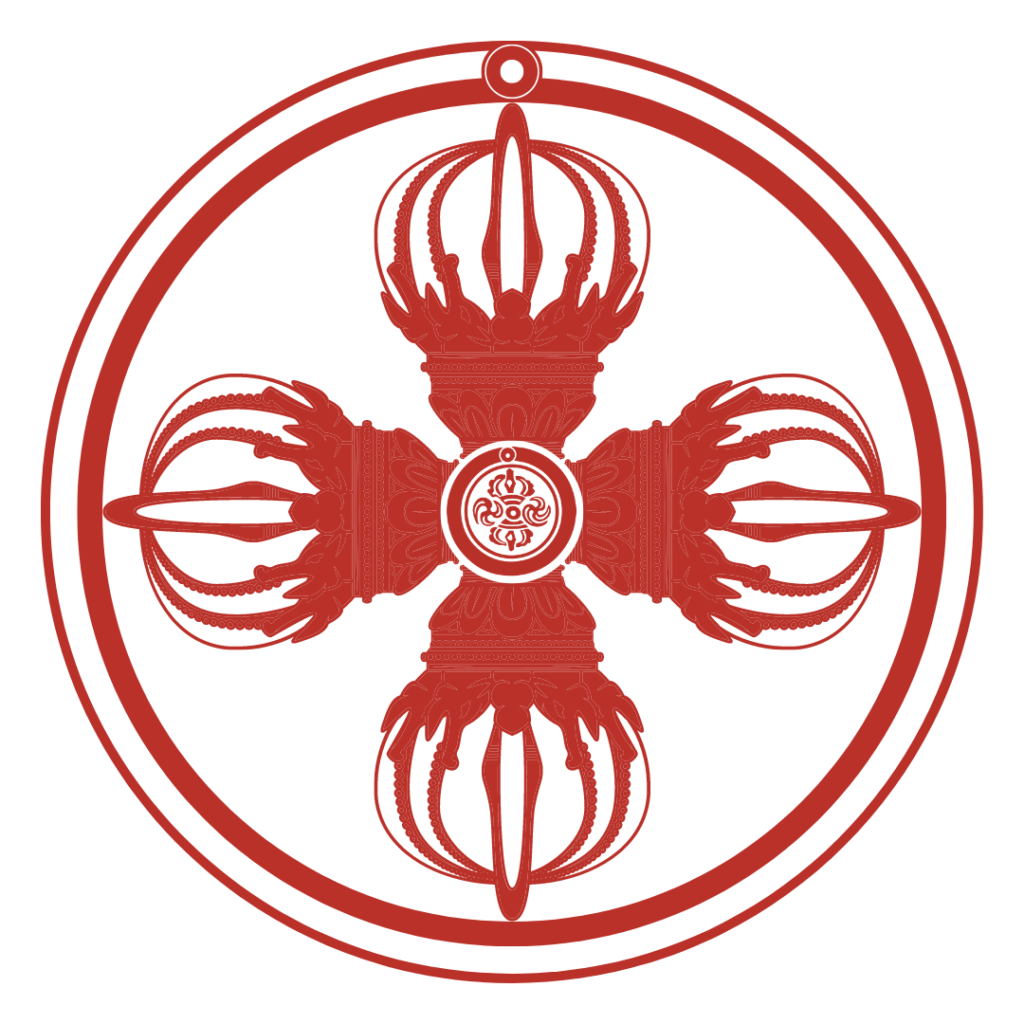
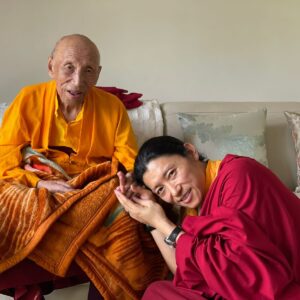
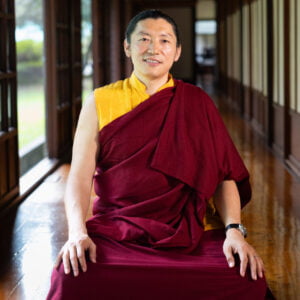
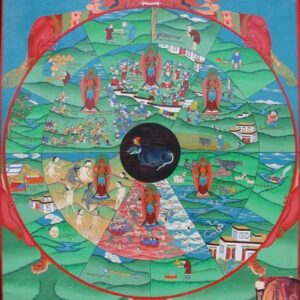

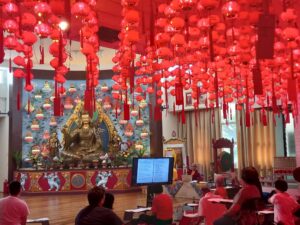
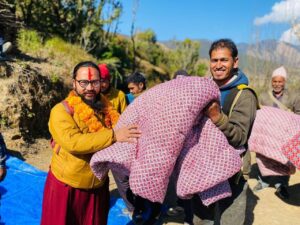
Responses